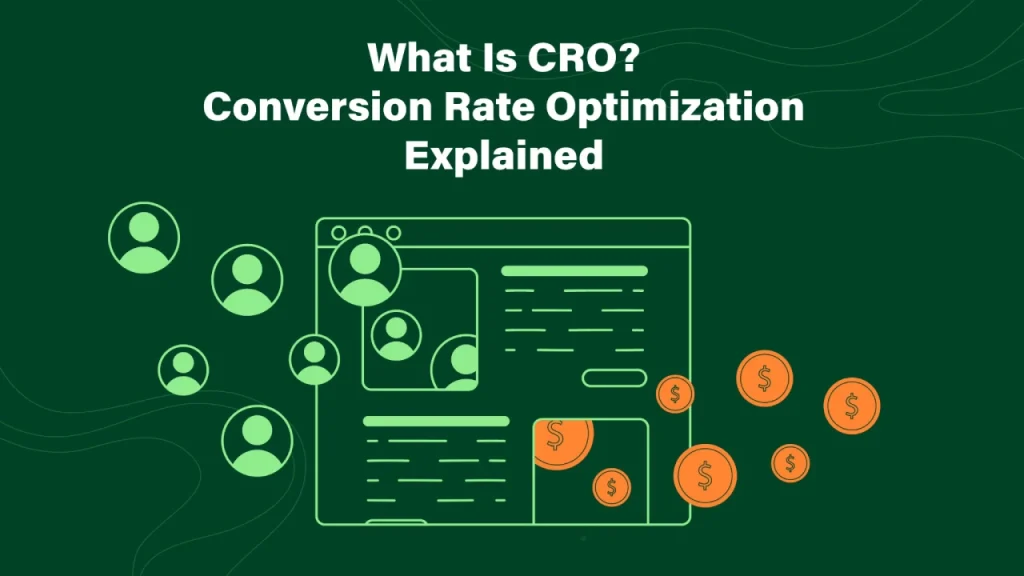Converting website visitors into paying customers remains one of the most challenging aspects of digital marketing. While driving traffic through various channels is essential, the real magic happens when you can systematically improve how that traffic converts. Understanding user behavior through data-driven insights becomes the cornerstone of successful paid media optimization strategies that deliver measurable results.
The relationship between analytics, heatmaps, and conversion rate optimization creates a powerful framework for businesses looking to maximize their return on investment. When you combine quantitative data from analytics platforms with visual behavioral insights from heatmaps, you unlock a deeper understanding of how users interact with your website. This understanding directly impacts how effectively your paid traffic converts, making every advertising dollar work harder for your business.
Understanding the Foundation of Data-Driven CRO
Analytics platforms provide the quantitative backbone of conversion rate optimization by revealing patterns in user behavior that might otherwise remain hidden. Google Analytics, Adobe Analytics, and similar tools offer insights into user flow, bounce rates, time on page, and conversion paths that help identify where visitors drop off in your funnel. These metrics become particularly valuable when you’re investing in paid advertising, as they help you understand which traffic sources convert best and where optimization efforts should focus.
The power of analytics extends beyond basic metrics to include advanced segmentation capabilities that reveal how different user groups behave on your site. When you segment users by traffic source, device type, geographic location, or behavioral patterns, you can identify specific areas where your paid media optimization strategies need refinement. For example, if mobile users from paid social campaigns show high engagement but low conversion rates, this data points to potential mobile experience issues that require immediate attention.
Heat mapping technology complements analytics by providing visual representations of user interactions that numbers alone cannot convey. These tools track mouse movements, clicks, scrolls, and attention patterns to create visual maps that show exactly where users focus their attention on each page. This visual data becomes invaluable when analyzing landing pages from paid campaigns, as it reveals whether users are engaging with your key conversion elements or getting distracted by other page elements.
Identifying Conversion Bottlenecks Through Behavioral Analysis
The most successful paid media optimization strategies begin with identifying exactly where potential customers abandon their journey toward conversion. Analytics data reveals the quantitative aspect of this problem by showing you drop-off rates at each stage of your funnel, while heatmaps provide the qualitative context that explains why these drop-offs occur. This combination allows you to prioritize optimization efforts based on both impact and feasibility.
User session recordings add another layer of insight by showing you exactly how individual users navigate through your site. When you watch recordings of users who clicked through from paid ads but didn’t convert, patterns emerge that help explain conversion barriers. You might discover that users are confused by your navigation, can’t find key information, or encounter technical issues that prevent them from completing their desired actions.
The timing of user behavior also provides crucial insights for optimization. Analytics can show you that users spend an average of two minutes on your pricing page before leaving, but heatmaps reveal they’re scrolling frantically looking for specific information that isn’t prominently displayed. This type of insight directly informs how you structure landing pages for paid campaigns and what elements need prominence to support conversion goals.
Advanced behavioral analysis involves examining micro-conversions that lead to macro-conversions. Users who engage with specific page elements, download resources, or interact with chat features often show higher conversion probability. By identifying these behavioral indicators through analytics and heatmap data, you can optimize paid campaigns to attract users more likely to exhibit these positive behaviors.
Optimizing Landing Page Elements for Maximum Impact
Landing page optimization represents one of the most direct applications of analytics and heatmap insights for improving paid campaign performance. The data reveals which page elements attract attention, how users scan content, and where friction occurs in the conversion process. This information becomes the foundation for iterative improvements that can dramatically impact conversion rates from paid traffic.
Above-the-fold content optimization requires careful attention to heatmap data showing where users focus their initial attention. If your primary value proposition or call-to-action isn’t receiving adequate attention according to heatmap analysis, repositioning or redesigning these elements can significantly improve conversion rates. Analytics data supports these changes by showing how modifications impact key metrics like bounce rate and time on page.
Form optimization represents another area where combining analytics and heatmap data drives significant improvements. Analytics reveals where users abandon forms, while heatmaps show which fields cause hesitation or confusion. This dual perspective allows you to reduce form fields, improve field labels, or restructure forms to minimize abandonment and maximize completions from paid traffic.
The placement and design of trust signals, testimonials, and social proof elements benefit greatly from behavioral analysis. Heatmap data shows whether users are noticing and engaging with these elements, while analytics reveals their impact on conversion rates. Strategic placement of trust signals in high-attention areas identified through heatmaps often results in measurable improvements in conversion performance.
Advanced Segmentation Strategies for Deeper Insights
Effective paid media optimization strategies require understanding how different user segments behave differently on your website. Advanced segmentation allows you to analyze analytics and heatmap data for specific groups, revealing optimization opportunities that might be masked when looking at aggregate data. This approach enables more targeted improvements that address the specific needs and behaviors of your most valuable user segments.
Device-based segmentation often reveals significant differences in user behavior that impact conversion optimization efforts. Mobile users might interact with heatmap elements differently than desktop users, requiring device-specific optimization strategies. Analytics data can show conversion rate differences between devices, while heatmaps reveal the behavioral reasons behind these differences, enabling targeted improvements for each user experience.
Traffic source segmentation provides crucial insights for optimizing paid campaigns across different platforms. Users arriving from Google Ads might exhibit different behavioral patterns than those from Facebook or LinkedIn advertising. By analyzing both analytics and heatmap data for each traffic source, you can tailor landing pages and user experiences to match the expectations and behaviors of users from specific platforms.
Geographic and demographic segmentation can reveal cultural or regional differences that impact conversion behavior. International paid campaigns particularly benefit from this analysis, as user expectations and interaction patterns vary significantly across different markets. Combining analytics insights about geographic performance with heatmap data about user behavior enables more effective localization strategies.
Implementing Continuous Testing and Optimization
The most effective approach to using analytics and heatmaps for CRO improvement involves establishing continuous testing cycles that build upon previous insights. This systematic approach ensures that paid media optimization strategies evolve based on real user behavior rather than assumptions or one-time analyses. Regular analysis cycles help identify new opportunities and validate the impact of implemented changes.
A/B testing frameworks become more effective when informed by analytics and heatmap insights. Instead of testing random elements, data-driven testing focuses on elements that behavioral analysis suggests will have the greatest impact on conversions. This targeted approach reduces testing time and increases the likelihood of discovering significant improvements that positively impact paid campaign performance.
Multivariate testing takes this concept further by testing multiple elements simultaneously, but requires careful analysis of both analytics and heatmap data to understand the interactions between different page elements. This approach works particularly well for high-traffic paid campaigns where you have sufficient data to detect smaller effect sizes across multiple variables.
The implementation of insights requires careful change management to ensure that modifications actually improve performance rather than accidentally harming conversion rates. Gradual rollouts combined with continuous monitoring through both analytics and heatmap tools help identify any unexpected negative impacts before they significantly affect paid campaign performance.
Measuring Success and ROI
Success measurement in CRO requires establishing clear metrics that tie behavioral improvements to business outcomes. While analytics provides quantitative measures of success, heatmap data helps explain why certain changes work better than others, creating a feedback loop that improves future optimization efforts. This comprehensive measurement approach ensures that paid media optimization strategies deliver measurable business value.
Return on investment calculations for CRO efforts must account for both the direct impact on conversion rates and the indirect benefits of improved user experience. Better-converting landing pages reduce the cost per acquisition for paid campaigns while potentially improving quality scores that reduce advertising costs. These compound benefits make CRO investments particularly valuable for businesses running significant paid media campaigns.
Long-term tracking reveals how optimization efforts compound over time, with small improvements building into significant competitive advantages. Users who have positive experiences with optimized landing pages are more likely to return directly, reducing reliance on paid advertising for repeat business. This progression from paid acquisition to organic retention represents one of the most valuable outcomes of systematic CRO improvement.
The insights gained from successful analytics and heatmap implementation create organizational knowledge that improves all future marketing efforts. Understanding user behavior patterns helps inform creative development, campaign targeting, and overall marketing strategy beyond just landing page optimization. This broader impact makes investment in comprehensive behavioral analysis tools and processes a strategic advantage that extends well beyond immediate conversion improvements.
Businesses that successfully integrate analytics and heatmap insights into their paid media optimization strategies consistently outperform competitors who rely solely on intuition or basic metrics. The combination of quantitative data and visual behavioral insights creates a powerful foundation for continuous improvement that drives sustainable growth and competitive advantage in increasingly competitive digital markets.

